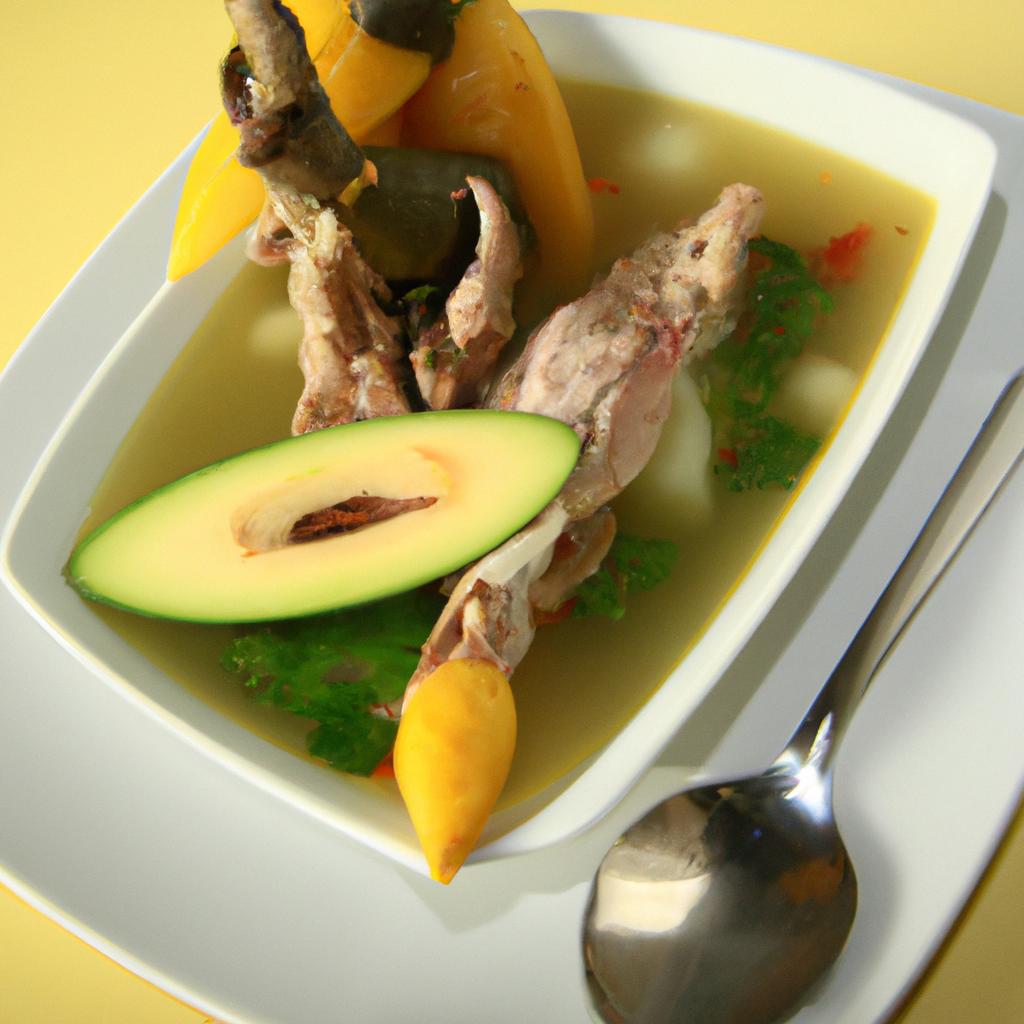Caldo de cabeza

The Story of Caldo de Cabeza: A Nourishing Tradition in Peruvian Cuisine
In the bustling streets of Peru, amidst the aroma of spices and the sizzle of grills, one dish stands out for its humble origins and remarkable significance: Caldo de Cabeza. This hearty soup, translated literally as “head broth,” has deep roots in Peruvian culinary history, serving as a symbol of resilience and nourishment for generations. In this blog post, we’ll delve into the rich history and significance of Caldo de Cabeza in Peruvian cuisine, exploring its importance for the working class and its elevated modern interpretations.
Origins and Historical Significance
Caldo de Cabeza traces its origins back to the colonial era in Peru, where indigenous culinary traditions merged with Spanish influences. Initially, the dish was born out of necessity, utilizing inexpensive cuts of meat to create a nourishing meal for the working class. As indigenous communities adapted to new ingredients introduced by Spanish colonizers, they incorporated organ meats and offal into their diet, maximizing flavor and nutritional value.
The traditional recipe for Caldo de Cabeza typically includes simmering beef or lamb heads along with vegetables such as potatoes, carrots, and corn, seasoned with aromatic herbs and spices like cilantro, garlic, and cumin. The slow cooking process allows the flavors to meld together, resulting in a rich and comforting broth that warms both body and soul.
Symbol of Resilience and Community
Beyond its culinary appeal, Caldo de Cabeza holds deep cultural significance in Peru. For many families, especially those in rural areas or urban neighborhoods with limited resources, this soup represents more than just a meal—it embodies resilience, resourcefulness, and communal bonds.
In times of hardship, such as economic downturns or natural disasters, Caldo de Cabeza often served as a lifeline for communities, providing sustenance and solidarity during challenging times. Its affordability and ability to stretch ingredients made it a staple for families struggling to make ends meet, fostering a sense of unity and shared experience among neighbors and loved ones.
Evolution and Modern Interpretations
While Caldo de Cabeza remains a beloved traditional dish in Peru, it has also evolved over time, adapting to changing tastes and culinary trends. In recent years, renowned chefs and culinary innovators have reimagined this humble soup, elevating it to new heights with creative twists and premium ingredients.
Modern interpretations of Caldo de Cabeza might feature gourmet touches such as sous-vide cooking techniques, artisanal broths infused with exotic spices, or innovative presentations that showcase the beauty of the dish. Despite these contemporary embellishments, chefs remain mindful of honoring the dish’s roots and preserving its essence as a comforting and nourishing staple of Peruvian cuisine.
Caldo de Cabeza - A Heritage of Elevated Simplicity
In the tapestry of Peruvian culinary heritage, Caldo de Cabeza occupies a special place as a testament to the ingenuity and resilience of the people. From its humble beginnings as a simple peasant dish to its modern incarnations in upscale restaurants, this hearty soup continues to captivate palates and evoke a sense of nostalgia for a bygone era.
As we savor each spoonful of Caldo de Cabeza, let us not only relish its flavors but also pay homage to the generations of cooks who have lovingly prepared it, and the communities who have shared it with open hearts. In a world that is constantly changing, this timeless dish serves as a reminder of the enduring power of food to nourish not just the body, but also the spirit.

Ingredients:
- 1 whole beef head
- 1 onion, chopped
- 8 garlic cloves, minced
- 1 tbsp cumin
- 1 tbsp dried oregano
- 2 bay leaves
- 6 cups of water
- Salt to taste
- 6 potatoes, peeled and quartered
- 3 ears of corn, husked and cut into thirds
- 1 lb. of yucca, peeled and cut into 2-inch pieces
- 2 carrots, peeled and sliced
- 1 red bell pepper, seeded and chopped
- 2 limes, juiced
- Cilantro, chopped for garnish
Instructions:
-
Rinse the beef head under cold running water and place it in a large pot.
-
Add the chopped onion, minced garlic, cumin, dried oregano, bay leaves, and water to the pot. Season with salt to taste.
-
Bring the pot to a boil, then reduce heat to a simmer and let cook for 2 hours or until the meat is tender.
-
Remove the meat from the pot and set aside to cool.
-
Remove any bones or cartilage from the meat and discard. Cut the meat into small pieces and return it to the pot.
-
Add the potatoes, corn, yucca, carrots, and red bell pepper to the pot.
-
Cover the pot and cook on low heat for another 30-40 minutes or until the vegetables are tender.
-
Remove the bay leaves from the pot and stir in the lime juice.
-
Ladle the caldo de cabeza into bowls and garnish with chopped cilantro.
-
Serve hot and enjoy!